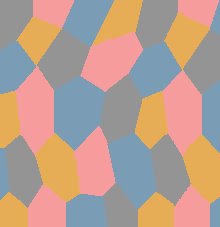



Lozenge camouflage was a military camouflage scheme in the form of patterned cloth or painted designs used by some aircraft of the Central Powers in the last two years of World War I, primarily those of the Imperial German Luftstreitkräfte. It takes its name from the repeated polygon shapes incorporated in the designs, many of which resembled lozenges. In Germany it was called Buntfarbenaufdruck (multi-colored print) but this designation includes other camouflage designs such as Splittermuster and Leibermuster, and does not include hand-painted camouflage.
